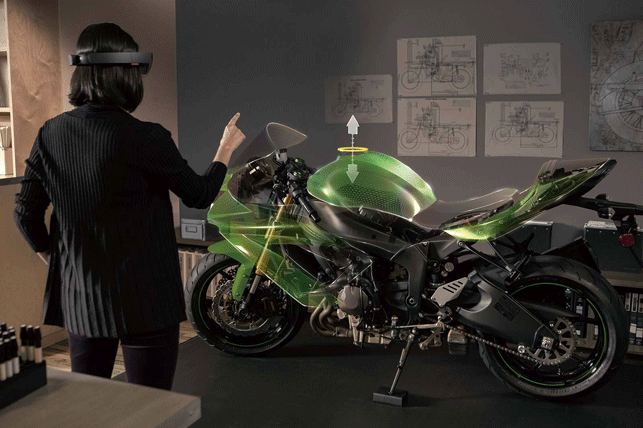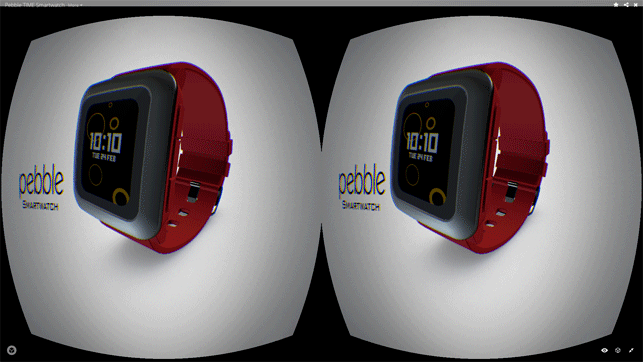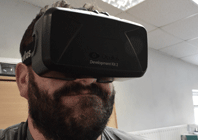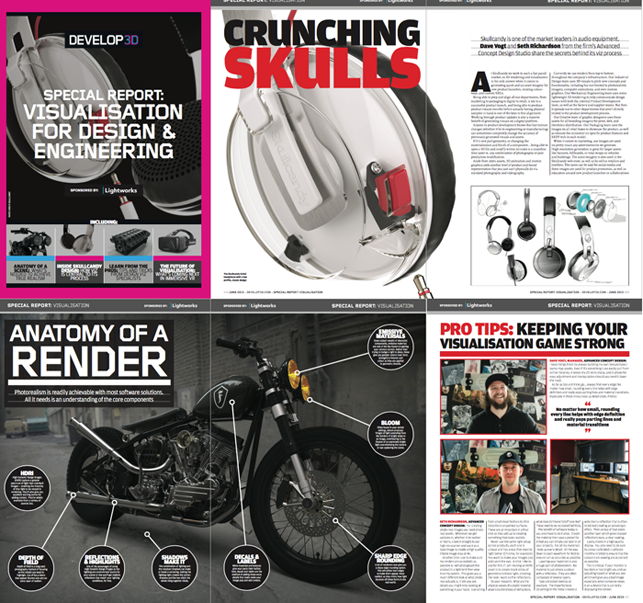With almost anyone with even the most cursory knowledge of rendering and visualisation able to create high quality images and animations, the barriers to photorealism have broken down.

Microsoft’s vision
for the HoloLens’ use in the professional space. Augmented reality a go go
However, we’re still pretty much stuck with same display technology that we had back at the dawn of the computing revolution. Yes, the CRT tubes have gone, replaced with sleeker, larger and higher-res LCD or LED displays, but we’re still seeing everything in two dimensions. And that kind of sucks.
Enter Virtual Reality. Those with memories long enough will remember the days when VR and immersive headsets promised the world — Lawnmower Man, anyone? It came and it went in the late 90s.
VR has remained in the higher echelons of the engineering sector, where OEMs in automotive and aerospace design use it for advanced design review. After all, who else has quarter of a million quid to spend on a fully immersive CAVE with motion tracking and stereographic display units?
This is all changing now. Driven by the consumer market, specifically games and augmented reality (which combines 3D display with the real world), there has been a huge resurgence of interest and activity in the subject.
Whether you take a look at the new products from Microsoft (the HoloLens) or the Oculus Rift (a start up acquired by Facebook for a whopping $100 million) or Google’s Cardboard project, there is a lot of activity around immersive display devices. So shouldn’t we be taking advantage of them?
The short answer is yes. There is huge potential take these consumer focused devices and use them to visualise your product concepts in full, immersive 3D.
And the costs are affordable. $300 will get you a decent headset which then be plugged into a high-powered graphics workstation. The problem is the design visualisation software isn’t quite there yet.
Vendor lag is the barrier
As mainstream immersive display technology is so new, most design visualisation software developers don’t readily support it.
There are several ways to get your data from your visualisation tools into a format ready for VR but many of them centre on exporting the data and using the games platform development tool, Unity, to create the app to run.
The process is far from simple. The data from your CAD system is typically way too heavy to be used, so there are a lot of intermediary steps that need to be taken that require skill and experience.
At present, we’ve only come across a handful of vendors that are building a VR display capability directly into their visualisation tools.
Web-based 3D model hosting service, SketchFab (sketchfab. com) recently introduced a display mode that allows you to turn the display into Oculus mode. Strap on a pair of goggles, add a suffix to the URL and away you go.

SketchFab introduced Oculus support recently. Add “/embed?oculus=2” to the model’s URL to switch it on
“What SketchFab offers is basically a virtual scene in which you can put anything, and this scene can be embedded anywhere,” explains SketchFab’s CEO, Alban Denoyel. “We added a VR mode so that every upload on SketchFab can be consumed in VR, by simply walking through this web-hosted scene with a VR device. Being able to visit them in VR adds a tonne of value compared to simply playing with it with your mouse on a web page.
“We are now working on animation support to let you publish even more advanced VR scenes and experiments,” adds Denoyel.
SketchFab is integrated with a range of 3D creation tools including (3ds Max, Photoshop, Blender, 3D scanning applications and game engines like Unity). According to Denoyel, this makes it one of the easiest and most straightforward ways to publish VR content.
Autodesk is also investing in this space. The company has a wealth of knowledge in the game and CGI market and some of that is now trickling down to its industrialfocused applications. The company’s high-end rendering system, VRED, gained Oculus support with the 2015 release and this has been improved on for the forthcoming 2016 release. (Note: Only the Pro variant supports Oculus). See the box out below to see how to get it up and running.
With both Oculus and Microsoft HoloLens shipping official products soon, application support is sure to grow in the next 12 months, possibly in the workhorse tools we use each day. However, just because VR technology is set to hit the mainstream, it is important not to get ahead of ourselves. Using VR effectively in design and engineering is far more involved than simply viewing a design model with an immersive headset.
Stuart Heatherington at one of the UK’s leading VR specialists, HoloVis, offers a little perspective, “With the reimmergence of VR headsets, we don’t see these devices as giving the same flexibility in data manipulation and group decision making in the same way we do with our larger scale VR systems,” he says. “Having said that, it doesn’t mean that there isn’t a place for VR headsets in certain industries. These systems provide a highly cost effective and easily portable approach to data visualisation when managed and used in the right way.
“At the moment it is the multinational corporations that are leading the way with investment and adoption of the larger-scale immersive systems, however as technology evolves, the challenges over scale, immersion and the human factors will be resolved to deliver viable solutions at an achievable price point. The most important factor is that any technologies used have highly effective and robust software that is seamlessly embedded into the work flow practice to improve accuracy and solve a business problem.
“In all situations end users need to look at the use cases and be clear about what they are trying to do and what they want to achieve.”
DEVELOP3D Visualisation For Design And Engineering Special Guide
Download our free guide to the latest viz software and hardware, plus exclusive pro tips and views on where everything is heading in the future. Not signed up to DEVELOP3D yet? It’s simple and free to do, and you can download our monthly magazine for product designers, engineers, makers and anyone else wanting to join the party – Sign up here.
Bringing Virtual Reality to the masses
Default








